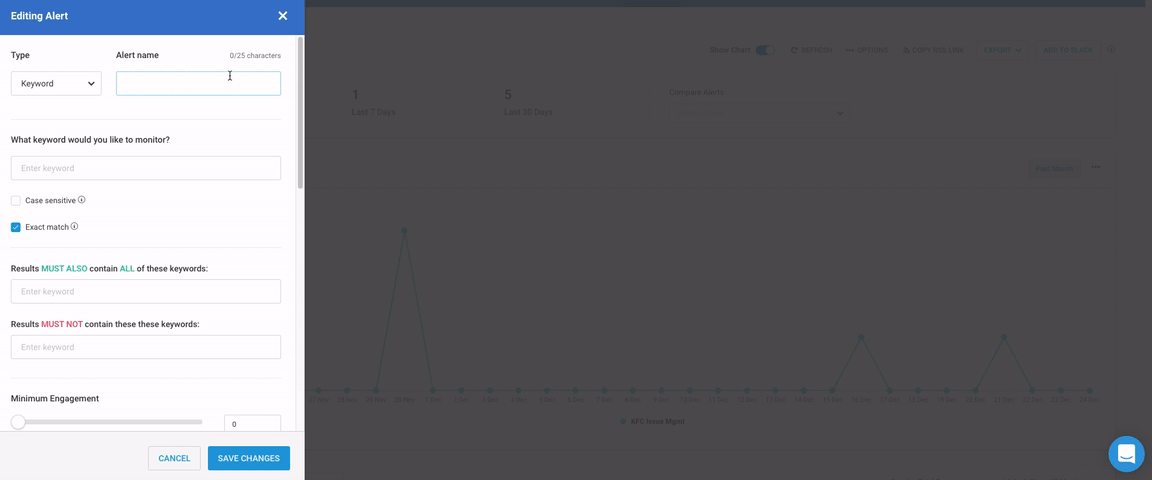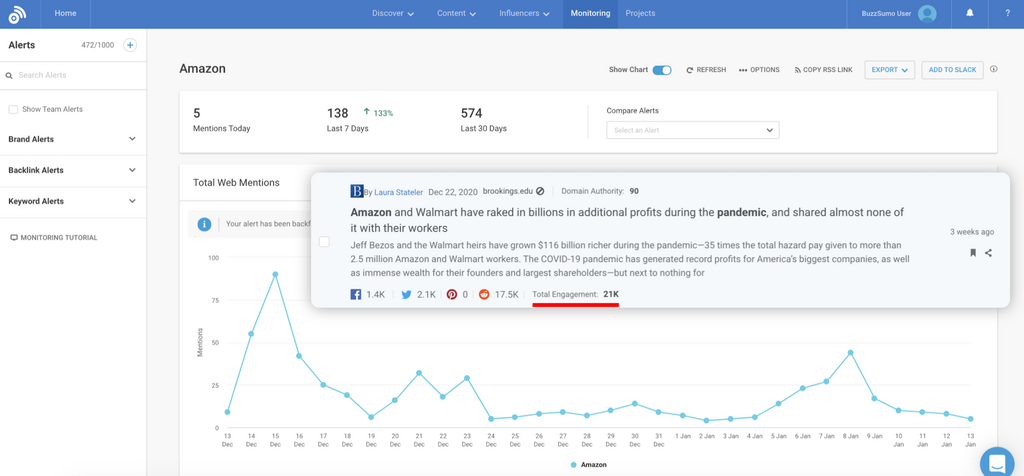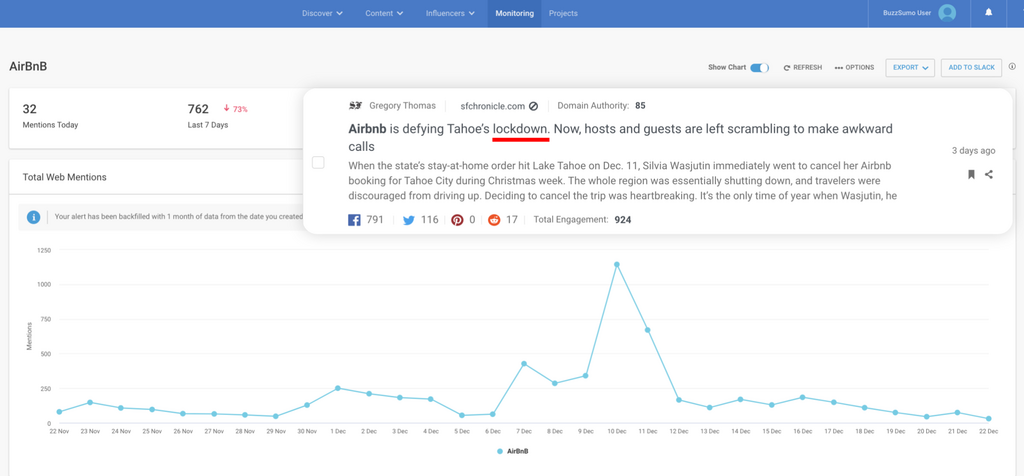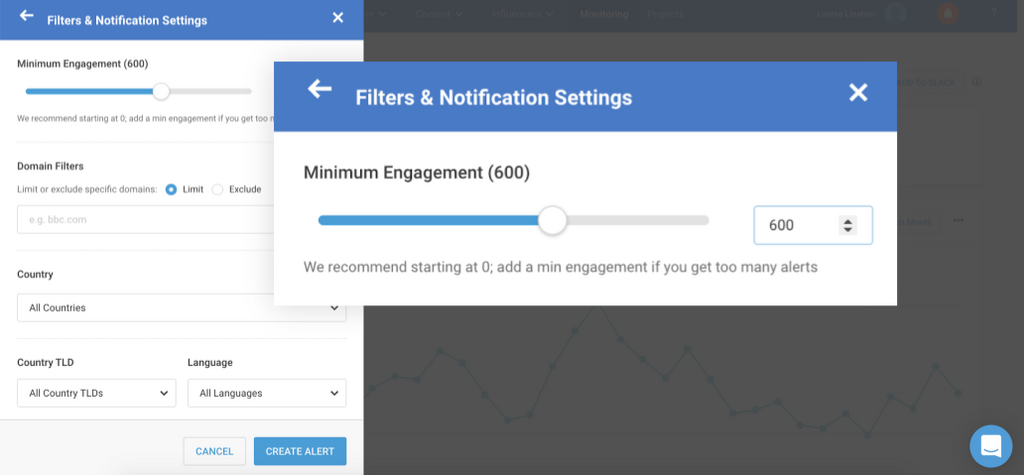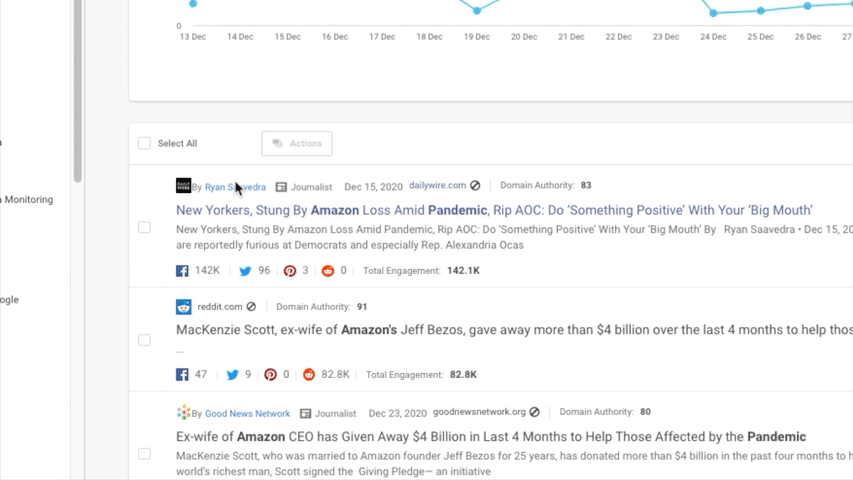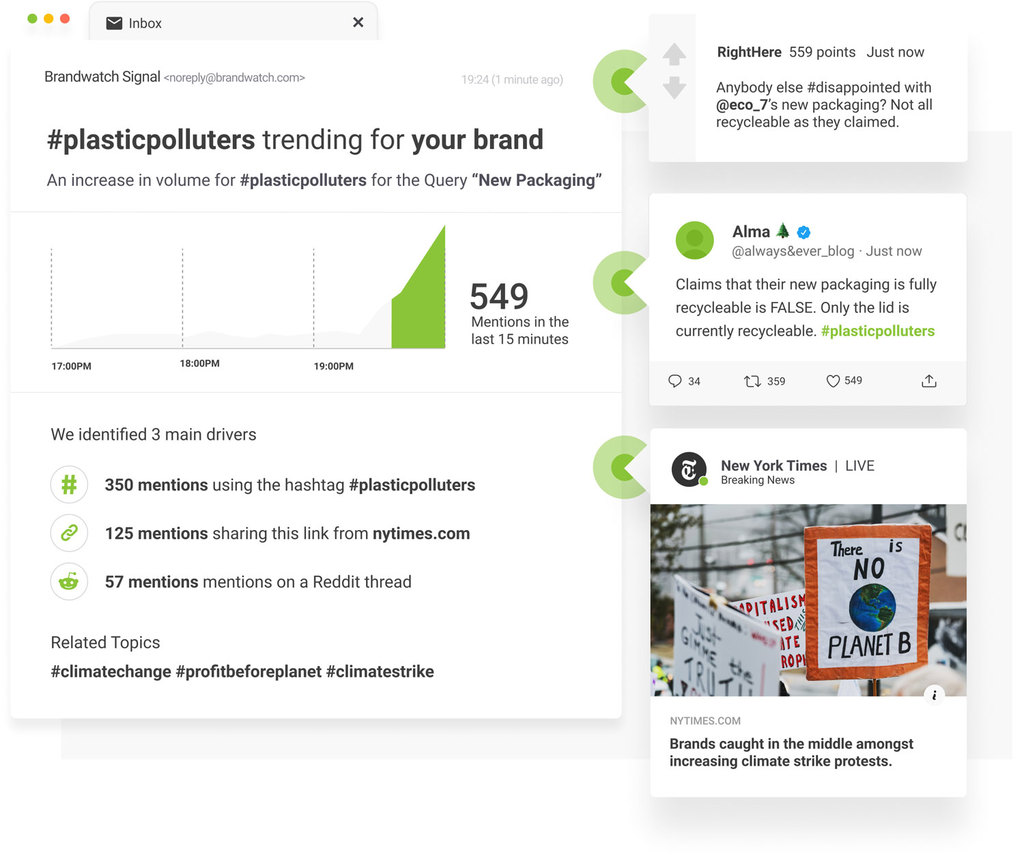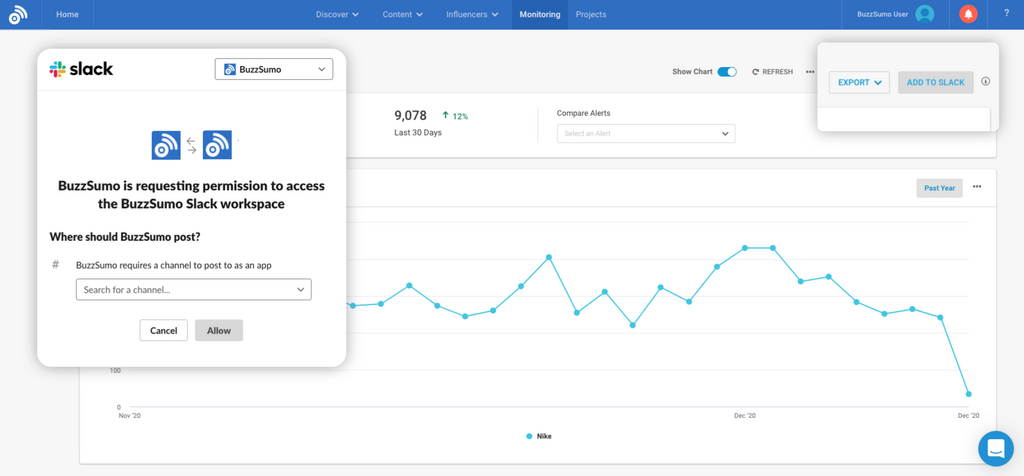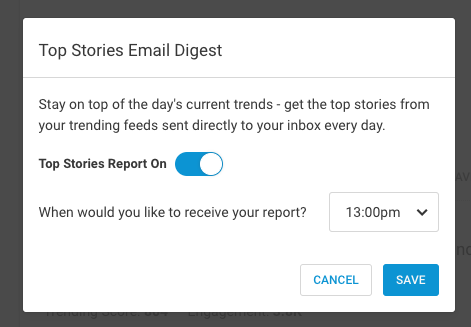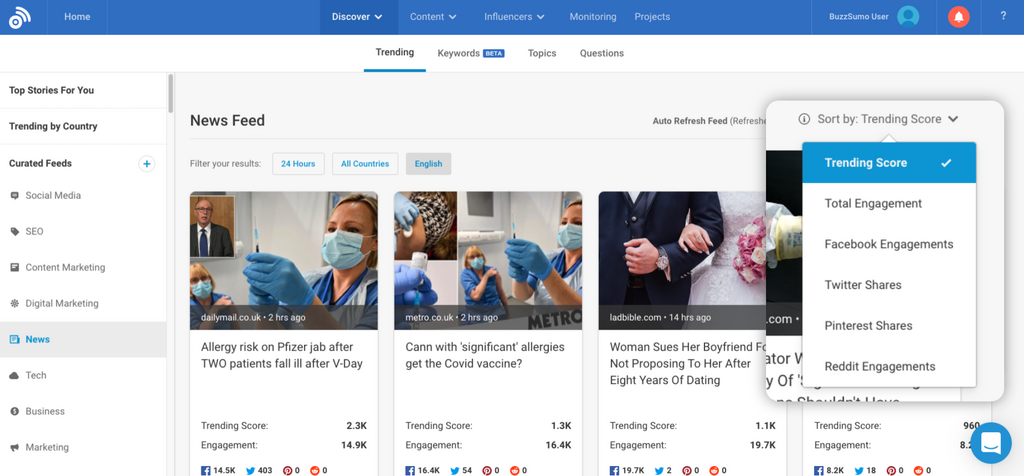Published August 1st 2023
Crisis Management: The Ultimate Guide
Right now, it seems like every week there's a new brand crisis or celebrity scandal. There’s never been a more important time to take a look at your crisis management strategy.
With the help of a few PR experts, we’ve put together some key information on what crisis management actually involves, and how best to tackle it.
Stephen Waddington has been in senior PR roles for the past twenty years, and now heads his own advisory firm, Wadds Inc.
Andrew Bruce Smith delivers training and consultancy based specialist digital PR and social media skills as Managing Director of Escherman.
Vic Miller, VP PR & Communications at GWI, has had over twenty years experience, working both in agencies and in-house. For this guide, she draws on her experiences as VP of Global Comms at global digital consumer intelligence company, Brandwatch.
Contents
How does crisis management work?
What are the three phases of crisis management?
Pre-crisis
Pre-crisis: How do you plan for a crisis?
- Set up alerts for predictable issues
- Set up alerts for unpredictable issues
Decide what constitutes a crisis (using data)
Decide who needs to be involved
Crisis Response
- A 7 step crisis response workflow
Case Study: Crisis Response & Resolution
Post-crisis
How does crisis management work?
Crisis management is all about spotting potential or actual threats to your business, and mitigating their effects in the fastest way possible.
A crisis is often caused by a piece of negative news surrounding a brand or its stakeholders that has the potential to do any of the following:
- Damage the brand’s reputation
- Hurt business operations
- Negatively impact business finances
- Harm stakeholders & employees
A crisis can be internal or external to your business.
Back to contents
What are the three phases of crisis management?
According to the Institute for PR, there are three main phases of crisis management.
Pre-crisis
Before a crisis has even occurred, you should lay the groundwork for successfully mitigating risk, through preparation and prevention techniques.
Crisis response
This phase kicks in as soon you identify a crisis, and involves quick decision-making followed by immediate action.
Post-crisis
The aftermath phase is all about reflecting on the crisis, planning any future commitments outlined in the response stage and iterating strategy for pre-crisis planning.
We’ll dive into each of these sections in more detail below.
Back to contents
Vic Miller
VP PR & Communications
“We divide our overall crisis comms work into two parts.
Firstly, issues management which incorporates everything surrounding potential crises – understanding key topics, how they’re developing, how they impact the work we do, how we can be a useful part of the conversation etc.
And secondly, the work of dealing with an actual crisis.
We have a detailed plan around both areas that we’re constantly updating and refining. It maps out a range of different potential scenarios, key stakeholder groups, processes, and much more. In addition to all the preparation work, ongoing monitoring, and the crisis itself, there is also the all important post-crisis evaluation.
It’s critical to take stock after a crisis to consider what learnings need to be shared and what needs to be improved and implemented. The effective handling of issues and crisis management is built into our OKRs to ensure we’re carefully tracking our performance.”
1. Pre-crisis: How do you plan for a crisis?
No business is safe from crisis and, with that in mind, every business should have its own “Risk register” or crisis management plan.
Stephen Waddington
Founder, Wadds Inc.
“A risk register should be part of an organization’s business and communication plan.
This should describe the risks related to the organization, the severity of impact, likelihood of impact and means of mitigation. This should be reviewed annually by the management team. ”
To be successful, your plan should include ways to monitor the two main types of crisis:
- Predictable crisis
- Unpredictable crisis
Creating a successful crisis management plan is all about being aware of what’s going on around you.
To keep tabs on the predictable and explore the unpredictable, it’s vital you have a real-time view of your media landscape.
Back to contents
Monitor your landscape
Through machine learning, algorithms and other powerful technology, spotting a crisis has never been easier.
Monitoring tools help brands spot mentions, measure PR, and manage a potential threat before it has the chance to do any serious damage.
At BuzzSumo, we use our own monitoring tool to track brand, competitor, content, backlink, author and keyword alerts in real-time across billions of articles on the web, to get ahead of any negative effects of a crisis.
As a result, we've nipped many crises in the bud before they've had the chance to take root. That being said, we've also discovered many reactive PR opportunities – one of which lead to our highest free trial conversion rate ever.
Media monitoring is therefore equal parts crisis management and opportunity identification.
Set up alerts for predictable issues
All businesses have known threats – their competitors for one.
Configuring alert systems around these predictable threats in the planning process is a great way to speed up phase two: crisis response.
Sit down with stakeholders from across the business, and decide on your most predictable crisis triggers.
Look at your business’ crisis history, any crisis types that are common to your industry, any issues that have been faced by your competitors or comparators, and finally, any challenging global, political or social situations that have the ability to impact your business operations.
Once you have decided on your most common threats, simply set up alerts to get instant notifications as and when these threats are mentioned across the web.
1. Set up keyword alerts around products and campaigns – For all you know, it could be you who inadvertently causes the crisis – ie. if your campaign or product misses the mark.
Let’s take a look at Airbnb. As part of a ‘Kindness card’ campaign, they encouraged guests to write a digital card with a positive message and a donation to Airbnb hosts – ie. home owners.
This angered a lot of customers who had lost their jobs and faced losing their homes as a result of the pandemic.
Creating an alert for phrases surrounding this campaign would have enabled Airbnb to assess sentiment, and issue an immediate statement / apology in response to negative press.
2. Set up a keyword alert for all your known crisis topics, such as global, political or social crises, so that whenever your brand is mentioned in relation to these topics, you get an instant notification.
To track a number of crisis topics in BuzzSumo, you simply separate them by the word ‘OR’ in the ‘What keyword would you like to monitor?’ field.
The last year has had a lot to offer us in the way of crisis examples. This is an easy way to track those known crisis topics in relation to a specific brand (eg. McDonald’s).
You can also repeat this process for competitors.
If you think yours or your competitors’ brand is likely to be named-and-shamed in relation to the known crisis, make sure you edit the alert to focus on ‘Title & Topic’ content rather than ‘Title, Topic & Article Text’.
This will show you when your brand has been targeted as the main focus of a headline.
Refining search scope options to ‘Title & Topic’ can also help you to find more relevant mentions, if your brand name or crisis topic is a fairly broad keyword.
It’s worth playing around with the alert set up until results appear most useful to you.
When you’re happy, you can edit the alert again and set up your daily alert digest to be sent direct to your inbox, so you know instantly when a crisis hits.
In the example below, we restricted mentions to ‘Article & Title’ and instantly found that Amazon had generated issue management worthy coverage surrounding the topic of the pandemic, that had racked up over 21k shares on social media.
Amazon’s crisis team would need to have this kind of negative headline on their radar to potentially respond to and ameliorate, if the story blew up further.
Back to contents
Set up alerts for unpredictable issues
In the same planning session mentioned earlier, with your team of diverse stakeholders, decide on any general topics that would be useful to monitor for your brand.
By setting up general brand, content, link or topic alerts, you can monitor spikes in engagement and jump straight into action, if engagement is negative.
The most obvious one to start with would be yours or your competitors’ brand name.
1. Set up standard brand name alerts – Monitoring yours or your competitors’ brand name first and foremost will give you an idea of the negative publicity that might be likely to crop up, and can also help to inform which unpredictable crisis topics to track.
For example, when we set up a brand alert for Airbnb, one of the most engaged with headlines within the last three days was a negative story, reporting that Airbnb broke local lockdown rules.
While this doesn’t appear to be a severe crisis that stands to significantly impact the business’ financial stability, it would be wise for them to keep an eye on similar stories, in case this sparks a chain reaction of negative publicity.
Based on this negative coverage, the comms team at Airbnb could have set up an additional alert to monitor predictable crises like ‘lockdown’, ‘pandemic’ and ‘coronavirus’ for spotting similar news surrounding its brand in the future.
2. Monitor competitor mentions of your brand name. Another unpredictable issue that you’d be wise to keep an eye on is competitor smear campaigns. You can set up alerts for these quickly and easily in BuzzSumo.
Back to contents
Confirm and prioritize the severity of a crisis
Once you’ve defined your predictable and unpredictable crisis triggers, you need to work out when your alert will require an all-stations-go crisis response.
This is a multi-faceted consideration.
First of all you need to decide what constitutes a crisis, then think about who needs to be alerted when things go wrong and who will sign-off on crisis response and communications.
Decide what constitutes a crisis (using data)
Monitoring mentions can be a super effective crisis management strategy, but what if the topic you’re monitoring is a common one?
Sifting through hundreds of mentions just in case one is crisis-worthy will soon become an inefficient use of your time.
You need to define what a crisis looks like to your business, and what metrics you’re going to prioritize, to make sure you’re focusing on only the most important alerts.
Social engagement
One prioritization strategy includes setting minimum engagement thresholds to trigger alerts as soon as your predictable or unpredictable issues attract a certain level of interest.
Engagement simply means the social shares, comments and likes that an article receives.
It’s important that you collectively decide on an engagement level that filters out the noise and is indicative of an unfolding crisis, but still requires minimal damage control – ie. the article in question hasn’t been liked and shared too widely just yet.
We recommend looking at past articles covering yours or your competitors’ crisis, to work out how many times on average each article was shared. This should help you benchmark and decide on a minimum engagement crisis threshold.
There are a couple of ways to find out this information.
1. In BuzzSumo’s crisis monitoring tool, each returning article is accompanied by the amount of engagement it attracted on the social media networks Facebook, Twitter, Pinterest, and Reddit.
If you periodically export this data as a csv, you can calculate average engagement across previous negative publicity, to help you decide what level of shares and engagement should trigger a crisis alert.
2. Another way is to use the BuzzSumo Content Analyzer. If you don’t already have tracking set up – or you didn’t at the point of your previous crisis – head to the Content Analyzer.
Simply search your crisis situation to find social engagement levels over the past 5 years, anywhere across the globe.
If you already know which articles you want to analyze, then drop the links into the search, separated by the word ‘OR’ for a full breakdown of engagement.
In this example, we looked at three bits of negative press concerning Airbnb's lockdown policy. Airbnb could use this share count data to decide on an exact engagement figure to trigger future alerts.
The more data you have to hand about previous crisis scenarios, the better you’ll get at understanding which thresholds to set for your own brand.
We highly recommend keeping a record of average engagement across any negative publicity – especially at the points of discovery and resolution. Having this kind of insight will help you set up future alerts, concept map and successfully nip future crises in the bud.
Once you’ve decided on your engagement level, you can configure your alert around it.
Back to contents
Influence
Another method of prioritizing crisis mentions is by focusing on the influence of the journalist or publication.
If you already know of influential people or sites that are likely to publish unfavourable news around your brand, be sure to set up an author alert around their name or a content alert featuring their publication URL.
Otherwise, keep an eye on your alert inbox to check for mentions from known websites that are likely to attract big attention (ie. national news publications).
In BuzzSumo, we help you quickly recognize influential sources by including:
- Publication logo / thumbnail (to spark visual recognition)
- Journalist name
- Publication URL
… as part of every mention.
We also highlight domain authority. Paying attention to this crisis metric is especially important for spotting fake news.
Beyond that, you can get more information on the journalist, including their top stories, publications they’ve written for, and their email address via our new Journalist Profiles.
This information will give you a sense of how much reach their story could achieve, and show you where to direct your crisis response.
All of the above will help you prioritize crisis mentions.
Back to contents
Vic Miller
VP PR & Communications,
“We joined an event last year which was all about navigating the complexities of the pandemic using insights.
Half an hour before I took a quick look at BuzzSumo to see what was trending and I got an Alert for a news story around a major drug release – something of particular relevance to people attending. I shared this news at the event and the comms people were shocked as they’d heard nothing about it in their own monitoring.
I then went in to get some more details for them and, on looking at the top ten articles around the new drug, we could see that the top three most engaged with articles were fake news and would be causing some significant issues. A couple of the people at the event used these details immediately to take action with their teams.”
Sentiment & conversation
Tracking the sentiment of media mentions is a sure-fire way to spot a crisis as it unfurls.
An easy way to do this would be to decide on the negative keywords you want to monitor in the planning phase, alongside your team.
Andrew Bruce Smith
Founder, Escherman
“No one has a crystal ball, but setting up monitoring to account for known negative keywords in relation to brand terms at the very least means that any potential issues should be flagged quickly.
It clearly can lead to false positives but this is preferable to allowing a crisis to escalate undetected.”
If you’re looking for a more automated approach to sentiment, some tools can do the heavy lifting for you, providing real-time opinions around the known and unknown threats to your brand.
Our friends at Brandwatch track billions of conversations across the web to help you do just this. Using Signals, they alert you to a potential crisis or trend via email when there are sudden changes in your data, such as trending stories or shifts in sentiment.
Looking at headline engagement and subsequently diving into the conversation can give you a more rounded view of the situation. A crisis can be created by a negative headline, or it can start as a complaint that gains momentum on social media. Eventually it will take both forms, but monitoring the content and conversation around a crisis from the outset will give you a better chance of spotting the crisis at its inception.
Vic Miller
VP PR & Communications,
“We often focus on quite specific topics when it comes to issues management, but it’s important to look at your issue in context of broader crisis topics, ie. Where does my issue sit next to COVID or Trump? Or national and natural disaster?
There’s a whole host of things happening around the world all the time. How much engagement are those stories driving? And how does this compare to other crises?
BuzzSumo shows you this insight, and it’s fascinating. From this, you can answer the questions “How does this crisis topic relate specifically to my brand or organization?”
This completely supports crisis comms planning, by showing you initial sentiment – and when it comes to that, you can’t know too much.
Then when you want to know what the conversation is surrounding the crisis, Brandwatch Consumer Research is great for that, and we continue our analysis there.”
Andrew Bruce Smith
Founder, Escherman
“A variety of tools can be used to scan for potential issues across multiple channels – it typically involves monitoring for brand and brand related terms in relation to words/phrases that might be indicators of issues.
On that level, Google Alerts or BuzzSumo monitoring can be set up to attempt to track these.
Other tools will automatically attempt to detect sentiment and whether there has been an increase in negative sentiment. Brandwatch, Hootsuite Insights and Mention are examples of this kind of sentiment tracking.”
Back to contents
Traffic
Knowing the traffic that a negative mention is driving – either to the content containing the mention, or to your own website – is another way to understand the scale of a crisis.
One way to do this is to enter the domain of the publication negatively mentioning your brand into BuzzSumo’s Keyword Tool.
This will return a lot of interesting stats, including the number of keywords the domain in question is ranking for, its organic monthly traffic, or monthly readership, and its page and domain authority – which highlights credibility and ability to collect links.
BuzzSumo’s keyword tool also gives you a view of every single article the domain is ranking for, and its projected traffic. Your job now is to work out how much traffic this negative publicity is bringing you.
In this example we’ve focused on the domain behind the article generating 21k in negative coverage for Amazon.
There’s an easy way to find out how much traffic this article is driving, out of the 75.3k keywords the site is already ranking for.
Simply export the data and search the URL of the article attracting negative attention.
This will give you a list of every keyword that the article is ranking for, along with its associated monthly search volume and, most importantly, its traffic or ‘Estimated visits’.
For the Amazon article in question, we found that it wasn’t ranking in search at all.
With this context, Amazon would be happy to know that engagement around this negative publicity didn’t extend from social to search.
Discovering traffic insight in this way is vital in helping you to assess whether a piece of negative content has the power to do big damage to your brand’s reputation.
Integrating your mention data with traffic sources like SimilarWeb can also give your crisis comms team focus when trying to find the most potentially damaging mentions.
Read part 2 (crisis response) for an example of the Digital PR Agency, Escherman, combining BuzzSumo data with SimilarWeb in this way.
Back to contents
Andrew Bruce Smith
Founder, Escherman
“Don’t stop monitoring. It is important to ensure that there is no re-emergence of negative content.
Check organic search results to see if negative coverage is appearing in relation to brand terms. Consider using paid search ads in relation to negative brand keyword terms.”
Decide who needs to be involved
We’ve said it before, we’ll say it again. Your crisis management team needs to be broad and diverse.
Appointing members from far reaching parts of the business will help you better deal with the crisis at hand.
Above is an example of just some of the key stakeholders you should consider appointing to your crisis management team:
The Leader: This is the person responsible for managing and overseeing the crisis. They rally the team to minimize the impact of an emergency on the business and its stakeholders. A leader should always have a second-in-command, in the event that they are unavailable.
Example title: VP of Comms
The Facilitator: This person knows how to get things done. They are process wizards and are always taking notes, divvying up actions and working out logistics to speed up the resolution process. They would make a good second-in-command.
Example title: Project Manager
The Rep: This person is responsible for the internal welfare and wellbeing of the employees within the company. They support internal communication, and keep the rest of the company notified of developments and decisions in relation to the crisis.
Example title: Head of Human Resources
The Tech: From data privacy breaches, to software outages (#GoogleDown anybody?) tech crises are increasingly common, so having a tech expert is super important. Depending on the crisis you’re most likely to face, this could be a member of the IT, an engineer or an analyst.
Example title: Head of IT
The Advisor: This member provides legal support to the rest of the team, in relation to legal ramifications and liability surrounding the crisis.
Example title: Head of legal
The Accountant: This team member assesses the business’ financial stability during the crisis. To help the team get through the crisis, they may decide to do things such as raise credit limits.
Example title: Head of finance
The Communicator: This person’s role is to stay in touch with clients and the media, and ensure all messaging is consistent both internally and externally. They will likely be involved in media monitoring and the implementation of crisis response, such as releasing press statements.
Example title: Head of Marketing and Communications
Of course crisis management roles can vary. Your CEO might be The Leader for example, or you may need to add a security stakeholder into the mix.
The most important thing is to have a list of key stakeholders and clearly defined responsibilities so that everyone knows what to do during the crisis.
Stephen Waddington
Founder, Wadds Inc
“An organization needs to define clear responsibilities and remit in a crisis. A command and control management approach is often used.
Roles should be well defined along with the scope of activity. Teams should be well drilled and have practiced crisis simulation. ”
While responsibility should sit with the leader and second-in-command, crisis management is a team effort, and it’s often important for numerous people to be alerted as and when a potential crisis strikes.
An easy way to do this would be to switch on inbox alerts for all team members.
Some crisis management teams also choose to have their crisis alerts integrated into their business communication platforms.
At BuzzSumo, we allow users to integrate with Slack and set up crisis management alert channels.
This can be configured to alert every stakeholder on the crisis management team when a crisis-worthy headline exceeds a certain amount of engagement.
Stephen Waddington
Founder, Wadds Inc
“An organization needs to define clear responsibilities and remit in a crisis. A command and control management approach is often used.
Roles should be well defined along with the scope of activity. Teams should be well drilled and have practiced crisis simulation. ”
Some of our large, global customers also choose to monitor trending news around their brand in the form of a daily digest to their inbox, using BuzzSumo’s Trending tool.
Via a proprietary Trending Score, this tool shows them which headlines have garnered the most shares over the last 15 minutes, so that they can respond immediately to any crisis worthy coverage.
Back to contents
2. Crisis Response
When you’ve completed stages one and two of your crisis management plan, it’s time to draft a response (step three) so that you can intercept early (step four) and limit the damage (step five).
A 7 step crisis response workflow
Here’s a straightforward 7 step crisis response workflow to help you do just that…
1. Rally your crisis team
Gather your key stakeholders to carry out their predefined responsibilities. Those involved will vary depending on the crisis. You may need The Facilitator to record details, actions and response plans, The Leader to keep the executive team informed, and The Communicator to liaise with key stakeholders (including employees, influencers and customers).
2. Make the rest of the company aware
Give a detailed explanation of the crisis to the rest of the company, let them know that you are working to get the crisis resolved, and offer advice on how employees should deal with any press enquiries.
3. Acknowledge the situation straight away
Get holding statements pre-approved by company executives so you can move quickly in acknowledging the crisis situation via public channels – including social & email.
This will give you more time to craft a detailed response, seek legal advice and rally the rest of your crisis team, while also helping you to avoid backlash.
It’s important to keep this message top-level, and retain the detail for your official press statement.
Example:
- Acknowledge the situation / incident
- State when it occurred (time / date)
- State who it involved
- Assure readers that the incident is under investigation, with more information to come
4. Draft your detailed statement
This will usually be done by The Communicator. Go into more detail on the points listed above, and explain what your company intends to do to resolve the issue. If the crisis warrants an apology then do so sincerely, and think about sharing a clearly defined action plan – but be careful not to over promise and under deliver.
5. Get sign-off
Share your detailed statement with a senior authority for initial review (ie. the CMO), and then other relevant stakeholders such as the legal team and the CEO.
6. Decide who needs to receive direct comms
This involves deciding who has the potential to be most affected by the crisis in question. Actions at this stage might include segmenting your customer / employee database, personalizing the messaging and deciding on an appropriate channel of communication. It’s important to do this before releasing your public statement in full.
7. Publish your statement
Once you’ve received sign-off from relevant stakeholders you can release your statement. Push it out to your social channels, and any publications that generated initial negative publicity. Part of this stage includes some level of outreach.
Back to contents
Case Study: How Escherman used BuzzSumo for Crisis Response & Resolution
Crisis
✉️ The general public contact a retailer to say that their product is faulty.
🙋🏻♂️ The retailer brings in Escherman to help them respond to negative press coverage around the product.
🧹 The retailer uses a popular yet costly monitoring tool, but Escherman realizes that the data has numerous duplications of negative press – which would take too long to clean and prioritize.
🚨 They turn to BuzzSumo, and set up a brand alert around the retailers’ product to spot mentions across the web.
🗞️ They find numerous, unique negative mentions of the product in the press.
🔀 They create an RSS feed of these mentions within BuzzSumo and integrate with Coverage Book to analyze traffic alongside SimilarWeb.
🌍 With BuzzSumo’s global monitoring, Escherman spots a mention from a Greek publication which has gathered thousands of page visits.
Resolution
📢 The retailer issues a product recall statement, with accompanying contact details to manage customer complaints.
📈 The retailer shares this statement with the author of the Greek publication, along with the authors of numerous other high engagement articles, and successfully mitigates the crisis within the month.
Back to contents
3. Post-crisis
In an ideal world, you would follow the three phases of crisis management and successfully prevent fall-out from negative press.
But as we all know too well, a crisis can occur out of the blue and force us into ‘Crisis response’ before we’ve had time to prepare.
In this situation, stage three (Post-crisis) is even more important. Ask yourself:
- What learnings can we take from this unforeseen crisis?
- What did we do well?
- What didn’t we do well?
- When did we act?
- How could we ensure that we act better and sooner, the next time a similar crisis occurs?
The more often you feed your learnings back into your crisis management plan, the better you’ll get at prevention (stage 1) and the less you’ll be forced into action (stage 2).
One way to do this is to draft out eventuality models or crisis battlecards.
Stephen Waddington
Founder, Wadds Inc
“Regret, reason, and remedy is commonly used to describe a best practice response to a crisis situation.
It describes how an organization should express sympathy for a situation, offer an explanation and its proposed means of redress.”
Eventuality models and crisis battlecards
While you can’t change the past, you can certainly learn from it. But this isn’t just something you should just do retrospectively.
It can be easy to get caught up in high-octane crisis management, but as a team take a moment to do something your future selves would be proud of you for.
Keep records of the important elements that define the crisis:
- The crisis type
- The crisis trend (include charts that visualize crisis inception, peak & resolution)
- The date that the crisis occured
- The time it took for you to become aware of the crisis
- The crisis duration (in total and in between trend stages)
- The amount of engagement the crisis drove (ie. shares & traffic. Remember, anomalous traffic increases aren’t always a good thing. Did your website traffic see a huge upswing during the crisis? If so, remember it!)
- The key people & publications to document the crisis
- The stakeholders affected
Turn these reflections into eventuality models or crisis battlecards, that you can refer back to in future crises.
While you’re in the swing of it, why not do the same for competitor crises and historic company war stories? While you might not be able to source all of the data to back these eventuality models up, having anecdotal evidence can still be very helpful.
After you’ve recorded every last detail, jump straight back into crisis planning and ensure you have the right alert notification systems in place to spot future crises that display similar characteristics.
Developing these kinds of processes will help you take learnings, build repeat agile strategies and replicate success.
Back to contents
Managing a crisis is no mean feat. Arming yourself with the right data is just about the best thing you can do to minimize the damage, and avoid future pitfalls. If you want to get to grips with crisis management, BuzzSumo is here for you – try our platform, completely free for the first 30 days.
Planning your next PR campaign? Read our guide on 7 Best Practice PR Tips For Your Next Campaign. Or read our latest report, where we studied 600K journalist profiles, and look into what it takes to create a compelling PR pitch.
Categories
Digital PRCategories
Digital PRThe Monthly Buzz⚡
Subscribe to BuzzSumo's monthly newsletter to:
Stay up-to-date with the best of the best in content marketing 📝
Get data-informed content, tips and tidbits insights first 👩🏻💻
Read top shared content by top marketing geeks 🤓
Try
Enter any topic, term or url to search to see BuzzSumo in action. It’s free!
100% free. No credit card required.



